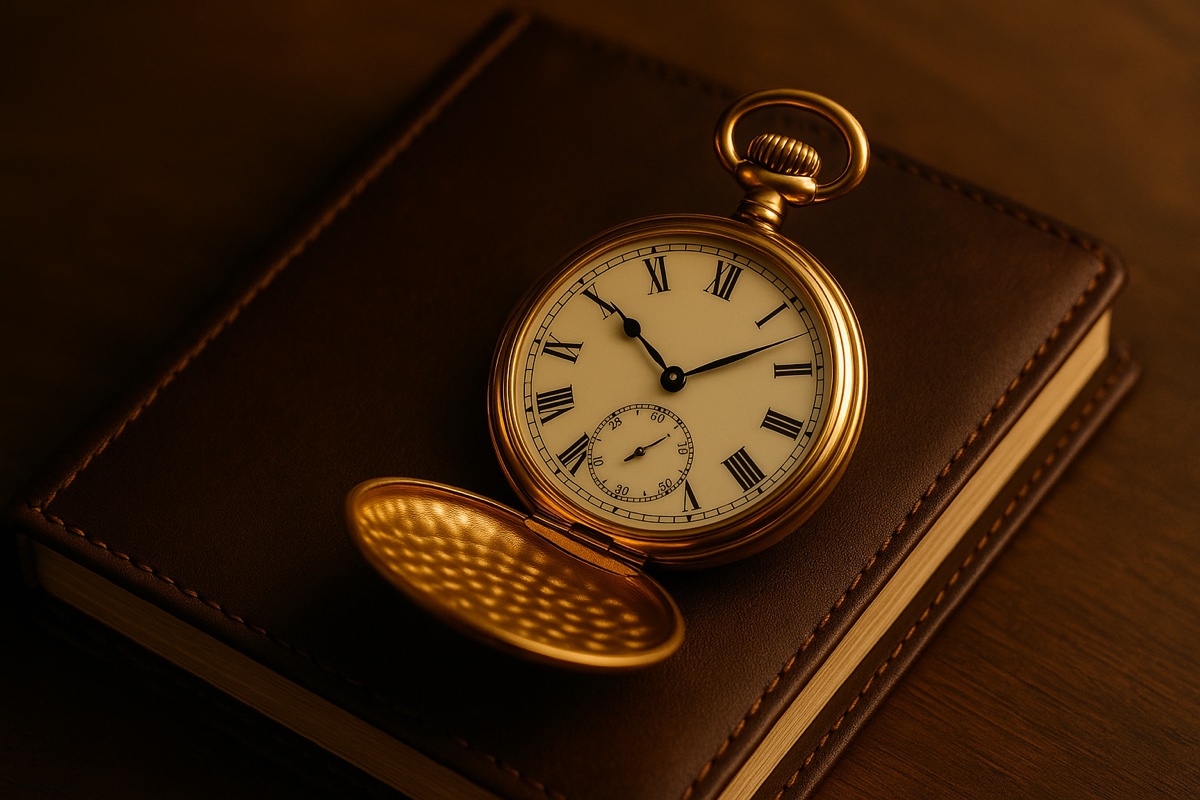The Two Types of Value
Every gold pocket watch has two potential values: its melt value (based on gold content) and its collector value (based on horological significance). Understanding the difference can mean the difference between hundreds and thousands of pounds.
Gold Melt Value
This is the baseline value - what your watch would be worth if melted down for its gold content. Factors include:
- Gold purity (9k, 14k, 18k, 22k)
- Total weight of gold components
- Current gold market price
- Buyer's margin for processing
Collector Value
This represents the premium above gold value that collectors are willing to pay. Key factors include:
- Brand reputation and rarity
- Historical significance
- Movement quality and complications
- Condition and originality
- Market demand
When Collector Value Exceeds Gold Value
Prestigious Brands
Watches from manufacturers like Patek Philippe, Vacheron Constantin, or Audemars Piguet almost always command collector premiums, sometimes 10-100 times their gold value.
Railroad Watches
American railroad grade watches from Hamilton, Elgin, or Waltham often sell for 3-5 times their gold value due to their historical significance and precision.
Complicated Movements
Watches with complications like:
- Minute repeaters
- Chronographs
- Moon phases
- Multi-hand displays
These features significantly increase collector value regardless of case material.
Rare or Limited Editions
Watches with limited production runs or unique features command premium prices from collectors seeking rare pieces.
Understanding Gold Purity
Common Gold Purities in Pocket Watches
- 9k Gold (37.5% pure) - Common in British watches, lower melt value
- 14k Gold (58.3% pure) - Standard American quality, good balance of durability and value
- 18k Gold (75% pure) - Premium European standard, higher melt value
- 22k Gold (91.7% pure) - Rare in watches, very high melt value
How to Identify Gold Purity
Look for hallmarks inside the case:
- Numbers like "375" (9k), "585" (14k), or "750" (18k)
- Traditional marks like crown symbols
- Maker's marks indicating origin
- Assay office stamps
Gold-Filled vs Solid Gold
Gold-Filled Cases
Many pocket watches feature gold-filled cases, which contain much less gold than solid gold cases:
- Thin layer of gold over base metal
- Significantly lower melt value
- Can still have high collector value if movement is exceptional
- Look for "GF" or "Gold Filled" markings
Gold Plated Cases
The thinnest gold layer with minimal melt value:
- Microscopic gold layer
- Essentially no melt value
- Value depends entirely on collector interest
- Often marked "GP" or "Gold Plated"
Market Dynamics
Material Price Volatility
Raw material values fluctuate daily, affecting melt values. However, collector values tend to be more stable and often appreciate over time.
Collector Market Trends
Current trends favoring certain brands or styles can significantly impact collector values:
- Vintage American railroad watches seeing strong demand
- Swiss complications commanding premium prices
- Original condition pieces increasingly rare and valuable
Maximizing Your Watch's Value
Professional Appraisal
A qualified horologist can identify:
- Exact manufacturer and model
- Movement specifications and condition
- Case material and purity
- Historical significance and rarity
Documentation
Gather any available documentation:
- Original boxes or papers
- Service records
- Family history or provenance
- Previous appraisals
Condition Assessment
Professional assessment can determine if restoration would increase value or if the watch is better sold as-is.
Common Mistakes to Avoid
- Assuming all gold watches are only worth melt value
- Polishing or "restoring" without professional guidance
- Selling to cash-for-gold buyers without proper appraisal
- Ignoring movement quality and focusing only on case material
Discover Your Watch's True Value
Our expert horologists can determine whether your pocket watch is worth its weight in gold or significantly more as a collector's piece.
Get Professional Valuation